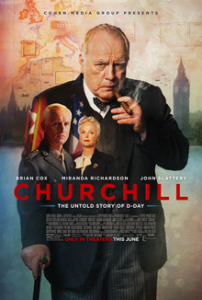 It’s difficult to talk about a film such as Margaret without discussing its troubled production history. The second feature by writer/director Kenneth Lonergan, Margaret was initially shot all the way back in 2005, with the intention of a release in 2006. For whatever reason, Lonergan struggled to finalise a cut that was to satisfaction of the producers and studio involved. The film’s chaotic post-production cycle meant that at more than one stage it was considered entirely unreleasable, with Fox Searchlight pictures even threatening to take the director to court for leaving them with what they deemed to be an inferior and unmarketable film.
It’s difficult to talk about a film such as Margaret without discussing its troubled production history. The second feature by writer/director Kenneth Lonergan, Margaret was initially shot all the way back in 2005, with the intention of a release in 2006. For whatever reason, Lonergan struggled to finalise a cut that was to satisfaction of the producers and studio involved. The film’s chaotic post-production cycle meant that at more than one stage it was considered entirely unreleasable, with Fox Searchlight pictures even threatening to take the director to court for leaving them with what they deemed to be an inferior and unmarketable film.
After been trimmed down to a truncated two and a half hour cut, Margaret finally got to see the light of day with a very limited release in North America last year. Its interesting to think that a project, as troubled as it may have been, with a director of Lonegan’s reputation, a group of quality actors (Anna Paquin, Matt Damon, Matthew Broderick and Mark Ruffalo) and a team of Oscar winning producers was once on the verge of been consigned to the dustbin of film history.
So the question remains, was Margaret worth the wait? The end product is a definitely a tangled mess of a film, equally frustrating and fascinating at turns. The main narrative thread follows high school student Lisa (a then very young Anna Paquin) inadvertently causes a traffic accident which results in the death of a pedestrian. A chain reaction of events spirals out from this incident, and Lisa teams up with the victim’s best friend in pursuing a lawsuit against the bus driver responsible (Mark Ruffalo).
Margaret’s biggest flaw is that it feels like three films packed into one, and 150 minutes is simple not enough time to cover the narrative scope that it sets for itself early on. In addition to Lisa dealing with the aftermath of the traffic accident, large chunks of the film are devoted to the chaotic relationship she has with her single mother, along with a series of coming of age experiences set against a backdrop of post 9/11 New York paranoia.
None of these threads are developed in any satisfying way, and the film’s tendency to seemingly shift its focus at random makes for a downright jarring experience. Character motivations and their relationships with one another vary without explanation from scene to scene, while the film lingers on seemingly unimportant details while racing through matters of greater consequence. An out of nowhere revelation from Lisa near the film’s conclusion, only to be never mentioned again, brings to mind unfortunate comparisons with Tommy Wisseau’s cinematic train wreck The Room in its narrative incoherence.
The frustrating part about viewing Margaret is that it consistently hints at its potential to be much better film. There a number of powerful dramatic sequences throughout, and the performances are generally strong across the board by the distinguished cast, but it ultimately counts for naught given the film’s scattershot nature. Even 6 years on, Margaret still feels like a work in progress. The knowledge that the material is there for a longer, and one would hope more complete cut, means that the film Lonergan intended to present to the world may one day be given a lease of life.






1 Comment